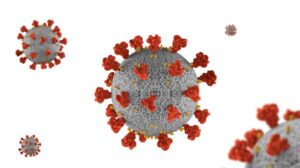Call for Donors in Blood ‘Emergency’ Easier for Brooklyn to Answer Thanks to New Facilities
4 min read
The New York Blood Center is calling on New Yorkers to roll up their sleeves and help end an “emergency” blood shortage, as COVID continues to depress donor turnout and cancel mobile drives.
It’s also looking to make giving blood easier in Brooklyn, where the 2017 shutdown of its only donor center in the borough has been a barrier.
Since December, the Blood Center has offered donation appointments at a new pop-up storefront at 309 Atlantic Avenue in Boerum Hill. And within the next year, says a top official, donors will have a new permanent destination when they seek to give.
“We’re in final lease negotiations and hope to reopen a Brooklyn donor center, maybe at the end of this year, but certainly early 2022,” Andrea Cefarelli, senior executive director at the New York Blood Center, told THE CITY.
The nonprofit began looking for a new permanent location prior to the closure of its former donor center on Lawrence Street in Downtown Brooklyn four years ago.
Although Cefarelli would not disclose the specifics of the new location, she said it’s within a half mile from the temporary Atlantic Avenue site.
She said she expects the new Brooklyn center to bring in between 10,000 and 20,000 blood donations a year, helping better access the borough’s diverse donor pool.
“There are rare antigens in diverse communities that are critical for certain patients that get multiple transfusions like sickle cell or thalassemia, and so we’re super excited to reopen that,” she said.
At the center’s Brooklyn pop-up site Wednesday, Elizabeth Certa wanted to give blood but found out that she couldn’t, she said, because she just changed medications and exercised before arriving at her appointment.
“I should be back in a week,” said Certa, 31, of Clinton Hill.
Certa said she’s been a loyal donor since reading an article in 2016 about a woman who died after not receiving a blood transfusion due to a blood shortage.
“I was like, ‘Wow, I didn’t realize this was still a serious issue that’s causing death,’” she said.
Canceled Appointments
Justin Clark, 39, of Cobble Hill, and his dog Biscuit walked by the pop-up site on Wednesday. He didn’t know about the shortage until THE CITY informed him.
“I understand how important blood donations are, coming from a medical family,” he said. “I’ve donated blood on occasions over my time. Unfortunately, it’s not in the forefront of people’s minds to donate blood.”
A permanent location might attract more people than a pop-up facility could, he said.
“I think that probably seems like the biggest problem, because if they’re moving around a lot, it’s hard for local people to find them,” Clark said.
Cefarelli said the closure of the Lawrence Street location wasn’t by choice.
“It was just a case that the lease expired and [the landlord] didn’t want to renew,” Cefarelli said.
One “unexpected benefit” of the pandemic had been more vacant real estate available, Cefarelli said, noting the center is finalizing the lease on a “wonderful space, potentially for less than we would have paid at the height of the Brooklyn market.”
The lack of a fixed location in a borough with 2.8 million residents took a heavy toll as blood supplies dipped in the 2020 city pandemic shutdown.
Before COVID, 75% of the center’s supply came from donations at mobile drives at schools, businesses and houses of worship. Now, what’s coming in is split 50-50 between donations from mobile drives and the center’s own locations, Cefarelli said.
The Blood Center declared its emergency on Aug. 23 as stocks dwindled to a two to three day supply. Universal Type O, the most in-demand among the blood groups, is at a one- to two-day level.
Cefarelli said that as cases started to increase in July, people didn’t show up to their appointments and scheduled blood drives were suddenly cancelled, creating a “perfect storm.”
“Donor turnout just dramatically dropped in early August and caused the decrease in our blood supply,” said Cefarelli. People can donate blood regardless of their vaccination status, but they must wear a mask while they donate blood, according to a Blood Center spokesperson.
‘Bring a Friend’
Cefarelli had hoped to see a return of college and high school blood drives this fall, but is not optimistic. Some 50,000 annual donations came from high school students prior to the pandemic, accounting for 20% of the blood bank’s supply.
“Since the start of the pandemic, we’ve had virtually no high school or college blood drives for three semesters. So this fall will be the fourth,” she said. “And the loss of those youth donors means that the burden on our known donors is that much greater.”
Another factor is adding to the challenge.
“Hospitals are using more blood now than pre-pandemic, probably because people postponed their surgeries and cancer care and things like that,” she said.
Since the Aug. 23 emergency declaration, donations have slightly increased but the supply still isn’t where it should be, she said. She urged New Yorkers to schedule appointments to donate blood, and to bring a friend. “Bring a first-timer,” she said, “because you’re the best one to convince someone to do it for the first time.”
This article was originally posted on Call for Donors in Blood ‘Emergency’ Easier for Brooklyn to Answer Thanks to New Facilities







